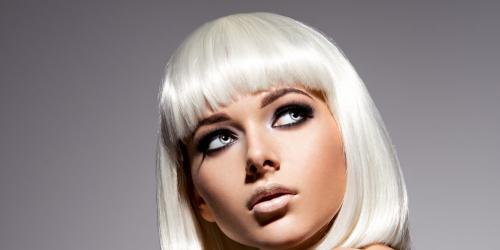The observation is without appeal: 44% of the French population declares having sensitive scalp *.
A phenomenon that affects more and more women, besides known classical pathologies, such as seborrheic dermatitis, psoriasis or eczema.
This sensitivity, a vague and subjective notion, if any, is manifested concretely by itching, redness, tightness, tingling, the impression of having the scalp "stretched", and sometimes even by burning sensations .
How do you get there and most importantly, what are the scalp itch solutions?
What causes itchy scalp?
Our hair is more and more in demand, not to say mistreated.
Logically, the scalp suffers the consequences of these daily aggressions , whether external (pollution, climatic hazards, too frequent shampoos, inadequate styling, dryer too hot, chemical treatments) or internal (stress or hormonal disruptions).
All these attacks, a priori innocuous, unbalance the production of sebum and alter its natural barrier function . Exposed, the scalp becomes permeable and vulnerable to inflammation.
Because it is a very innervated area: about six hundred nerve endings per square centimeter of skin respond to all sorts of stimuli, releasing neuromediators.
These messengers activate receptors that cause a cascade of sensory reactions, ranging from the pleasure provided by a cranial massage , for example, to the desire to scratch oneself in the case that interests us.
And the more we do it, the more receptors will become active: a veritable vicious circle.
What Hair Solutions to Adopt?
To get out of it, you must first put your hair to rest and sift through all the daily gestures , which will isolate the responsible factor (s).
If the irritation persists after this phase of observation, we go into the "capillary reset" mode, using soothing washing bases formulated with a minimum of surfactants so as not to distort the sebum. Recently, Laboratoires Ducray have identified a new active, polidocanol, able to slow down the activation of receptors of inflammation.
To optimize the action of these shampoos, massage the scalp without rubbing and rinse long with warm water so that no residue remains on the skin.
If our nature of hair (or our desires) forces us to use detanglers, masks and stylists, we avoid applying them too close to the skull and we banish all those that contain alcohol, such as lacquer or gels fixing.
Itching of the scalp: operation oxygenation
Once the scalp has been thoroughly cleansed, it is possible to proceed to phase two, namely to calm the sensations of tingling and persistent heating.
For this, nothing better than the botanical potions to apply twice a day by massaging and taking off the skin, often ultra tense. Objective: to reoxygenate the tissues, stimulate circulation and bring a fresh effect that relieves immediately.
At the same time, care must be taken to limit any cranial tension : too much hairstyle, pins, creping, brush strokes too rough. At the time of blow drying, which can be responsible for shots of hot and redness, it is usual to put our hairdryer at the minimum temperature and not to press it too close to the skin.
The "scrub", a new anti-dandruff weapon
Inspired by the care for the skin, we now put on scrubs.
Applied directly to dry scalp, they are massaged for a few minutes to remove accumulated dead cells.
Detoxified, the scalp regains balance. An interesting option in the face of classic anti-dandruff shampoo, the anti- fungal efficacy indisputable but surfactants a little too strong.
* Epidemiological study carried out in April 2008 on 111 representative subjects aged 15 years and over. Thanks to Rebecca Watkinson, chemist and formulator for Aesop, and Vincent Durosier, medical director of Laboratoires Ducray.


